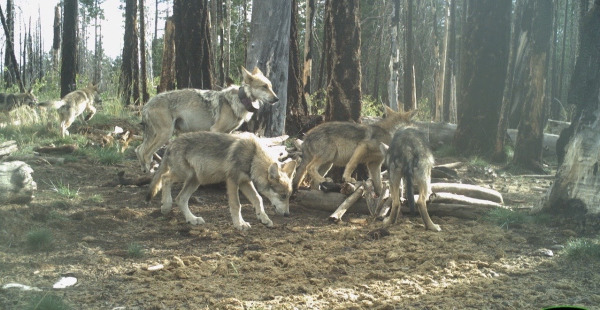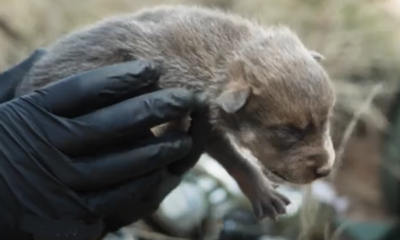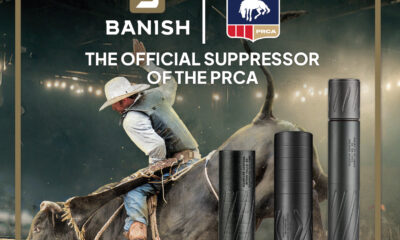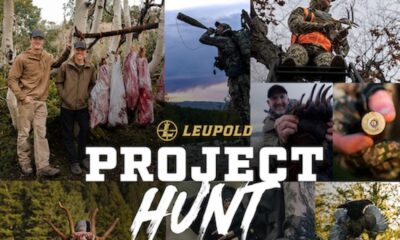Adventure
Wolves in Arizona: Cross-Fostering Hoodoo

It’s not Voodoo, it’s Hoodoo. (Who do?)
One of the greatest controversies among sportsmen and conservationists is the role of the wolf in our ecosystems. That controversy may just be heating up in Arizona soon: Today, we’ve learned that the Arizona Game and Fish Department (AZGFD) wolf biologists have captured, collared, and released three cross-fostered wolf pups as part of their ongoing efforts to boost the health of the Mexican wolf packs in that state. The pups are now traveling with the Hoodoo Pack in the northeastern Apache-Sitgreaves National Forest.
What is cross-fostering?
Cross-fostering is a new conservation technique in which newborn pups from one pack are transplanted into a new pack in which another wolf has just had a litter. The idea–which so far is working well–is for the pups to be “adopted” by the new bitch. They do this for a couple of different reasons. The first is that the Mexican wolf packs need more genetic diversity; switching pups from one pack to another helps reduce inbreeding.
The second reason wildlife agencies cross-foster wolves is that wolves that have been “fostered” by humans as pups will never develop fear of us, and that means more conflicts with humans once the pups grow to adulthood. The hope is that cross-fostering will keep the pups “wild enough” to cut human beings (and our livestock) a wide berth.
How do they do it?
AZGFD officials safely captured the wolf pups (fp1890, fp1887 and mp1888) with padded foot-hold traps. These traps are designed to safely capture wolves by holding the trapped animal by the foot until it can be chemically immobilized, provided a physical health assessment, collared and released. The IFT uses traps with multiple safety devices to avoid causing injury to animals captured and temporarily held by the traps.
The three cross-fostered wolves were then fitted with satellite tracking collars that emit GPS locations and radio signals that biologists on the Mexican Wolf Interagency Field Team (IFT) use to monitor the wolf population. The data collected can help document reproduction and survival of collared wolves.
All three of the cross-fostered wolf pups were captured, processed and released on-site without any wounds or injuries. AZGFD wolf biologists monitoring the newly collared wolves have noted that each of the collared wolves have rejoined the pack and are doing fine.
So where’s the controversy?
Ask any rancher or big-game hunter in Montana, another state that has been re-introducing wolves over the last decade. “We extirpated them for a reason,” growled one of my elk guides. “That business about wolves just hunting to survive is bull. Wolf packs will tear through a sheep herd like a woodchipper and just leave the corpses everywhere. And forget about finding a big, mature bull elk. Wolves ate ’em.”
Wolves are apex predators, and adding them back into an ecosystem that hasn’t had them for a long time is absolutely going to change everything about how the fauna of that ecosystem interact. Even those conservationists among us (myself included) who feel that our wild spaces are empty without the occasional howl from the Hoodoo Pack must admit that.
Have wolves been reintroduced in your state? Tell us in the comments!
-

 Hunting2 months ago
Hunting2 months agoDrain the Swamp: Corruption Scandal at Washington State’s Fish & Wildlife
-

 Adventure3 weeks ago
Adventure3 weeks agoDoes the “Big Beautiful Bill” Have a Public-Lands Wart?
-

 Adventure1 month ago
Adventure1 month agoHowling in Cuckoo: How Mexican Wolves are Fostered
-

 Gear1 week ago
Gear1 week agoLet Freedom RING! Primary Arms’ Independence Day Category Sale Starts NOW
-

 Adventure3 days ago
Adventure3 days agoREACTION: Trump’s Make America Beautiful Again Agenda
-

 Adventure2 weeks ago
Adventure2 weeks agoU.S. Bighorn Sheep Going Home to Canada
-

 Adventure2 months ago
Adventure2 months agoGoing Rodeo! BANISH Named the Professional Rodeo Cowboys’ Official Suppressor
-

 Adventure1 month ago
Adventure1 month agoYour Dream Hunt Could Be a Movie & Leupold Can Help






